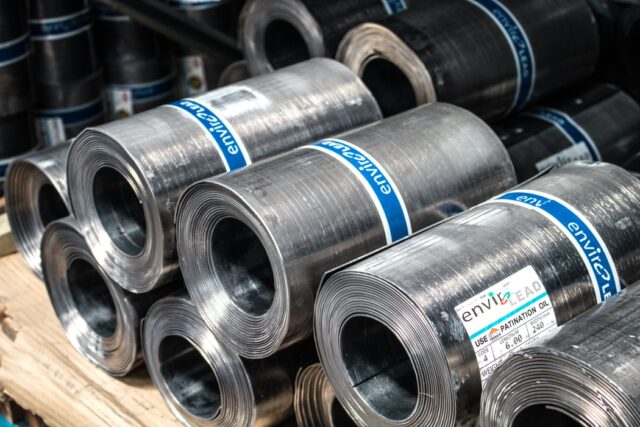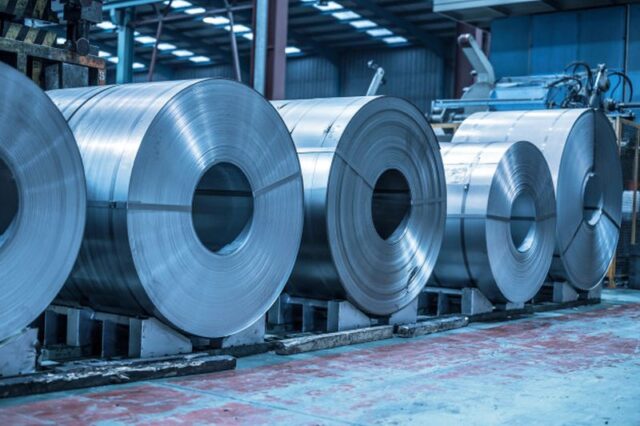Advancements in the manufacturing processes have led to the innovation of various effective methods in a bid to solve certain problems in the contemporary world. Steel and aluminum have contributed significantly to the efficacy of several manufactured items due to their desirable properties. Steel is one of the toughest materials known to exist and products made of this metal boasts high chances of endurance. Aluminum, on the other hand, has a resistive property to corrosion and therefore it maintains its initial state for a prolonged period.
While steel’s attribute of sturdiness makes it apt for manufacturing of products with high robust requirements, protecting the material from damage such as corrosion requires supplementing it with another essential substance. For a prolonged period, galvanized steel has been the way of manufacturing in a bid to increase steel’s efficacy. However, with the introduction of aluminized steel in the market, the product has provided a more effective way. The method is rendered useful in specific processes as well as cost-effective.
Besides resistance to corrosion, aluminized steel boasts resistance to high temperature; it remains stable to a temperature of up to 480o C. It also has a low thermal expansion coefficient denoting that it has a low possibility of deforming under heat stress. These properties have seen aluminized steel suiting several applications.
In this article, we will provide an overview of the aluminized steel giving insight on its usefulness while we describe some of the possible impacts on human and environmental health.
What are the uses of aluminized steel?
Due to the versatility of aluminized steel, several products utilize the approach while manufacturing most of their products. The approach involves coating the highly strong steel with aluminum which enhances the resistive properties of the final product. Here are some of the common applications of aluminized steel.

1. Manufacture of pipes: Some conditions necessitate transportation of corrosive substances in liquid form from one place to the other. Common metallic pipes are not appropriate for use in such cases as they will eventually corrode and wear off. For that reason, Aluminized Steel pipes are instead used for safe transportation of such corrosive materials as they will resist to corrosion from the material.
2. Drying ovens and kilns: as mentioned earlier, aluminized steel can withstand high temperatures, over 480o C, therefore rendering it ideal for products that have to perform under such high temperatures. Some of such products include kilns and drying ovens where aluminized steel is used to make components in them that are subjected to these temperatures such as the inner lining, and heating elements.
3. Automotive parts: while components in vehicles and other moving machinery require high endurance, there are also some heat producing components in them. The heat dissipation necessitates for parts manufactured of materials tolerating the high temperatures. For that reason, several automotive parts more so the ones close to, or are part of the engine, have an aluminum coating to increase their resistance.
4. High-temperature ducts: some ducts such as those used in the air conditioning systems have hot gases or liquids passing through them. These ducts would not be highly effective if they were made of low-resistive materials. Ducts made of aluminized steel are resistant to the high temperature as well as corrosion in case the fluid through them has corrosive properties.
5. Heat exchangers: materials used in the manufacture of heat exchangers should have high endurance since there are high temperatures involved in the heat transfer process. Some heat exchangers use liquids such as freon in their process, which is highly corrosive material. While several industries use various materials, when aluminized steel is used in the production of heat exchangers, they prevent corrosion as well as ensure they endure these high temperatures.
6. Cookware: one of the aluminized steel’s widely used areas is the cookware products. Most of the aluminum pots, kettles, among many other household items used in the kitchen have an aluminum coating. Outdoor items such as grills are also made of aluminized steel. An item with this aluminum coating has an extended lifespan as they do not easily corrode, while they endure heat from cooking for a longer period.
Aluminized steel can be used in several other areas involving a high amount of heat generated. The current market may only term this product as the most effective maybe until they find another better solution. There are two types of aluminized steel, i.e., Type 1 aluminized steel whose aluminum coating has stains of around 5% silicon, and Type 2 aluminized steel that has a pure aluminum coating. Since type 2 has a thicker coating, it is mostly preferred by manufacturers for jacketing while type 1 is used mainly for insulation.
However, despite the benefits relished by the beneficiaries of aluminized steel products, information on whether they pose any threat to the naturally occurring phenomena including the environment and the human is crucial. Such information promotes awareness thereby advocating for environmental and health care.
So, is aluminized steel safe? We need to consider the effects the materials have on each of the situations to respond to the matter.
Effects on the environment

Aluminum is a highly reactive element and can easily react with several other elements. For that reason, it does not exist freely as an element, but instead, it reacts with elements such as oxygen and fluorine. The resultant compounds are actively involved in the surrounding process as they dissolve in water, attach to other particles, get absorbed by trees and find their way into organisms’ bodies.
Presence of naturally occurring aluminum is not considered to cause a significant effect. However, the actions of human beings lead to an increased amount of aluminum in the environment. Establishment of mines and industries to help in obtaining and manufacturing aluminum is on the rise. There are companies in every metal-rich region producing aluminum, and steel among many other metals and alloys.
The establishment of these metal mining and producing companies has led to increased amounts of metal compounds including the aluminum compounds. Besides the aluminum compounds found in rocks, soil, and minerals, industries are always releasing compounds into the environment thereby increasing the effects it causes.
There are a few natural effects related to each phase of aluminum creation, from mining to assembling. The major natural effect of refining and purifying is ozone depleting substance emissions. These gases result from both the electrical utilization of smelters and the side-effects of handling. Aluminum might be assigned as crustal in birthplace, and in this way surface soils at uncontaminated locales comprise a wellspring of dissolvable aluminum species in surface water and aluminum-containing particulates in residue and surrounding air pressurized canned products. As anyone might expect, the last are available broadly in air tests in horticultural networks and when street dust is broad. Ecological fermentation is known to activate aluminum from land to amphibian conditions. Strangely, aluminum levels and its different structures (species) are regularly comparable in source water and after its treatment with potassium alum as a woolly amid drinking water filtration.
Laborers in the aluminum creation and client enterprises, just as aluminum welders, experience impressive exposures to the metal as well as its mixes. Without word related exposures and interminable utilization of aluminum-containing acid neutralizers and cushioned ibuprofen, nourishment is the real admission wellspring of aluminum, trailed by drinking water. While thinking about bioavailability, in particular, the division that is taken up into the circulation system, sustenance is again the essential take-up hotspot for people not occupationally uncovered. Be that as it may, perpetual utilization of stomach settling agents, cushioned aspirins and other therapeutic arrangements would almost certainly comprise the real take-up source, notwithstanding when uncovered at work.
Effects on Human Health

Eventually, after aluminum concentration reaches a significant level, it finds its way into the human body. The easiest way aluminum compounds get into the body is through consumption. Most whole foods such as meat contain small traces of aluminum naturally. They introduce these elements into the body when they consume. Besides, during food processing, small amounts of aluminum can be added through flavors, baking powders among other additives.
Acidic products such as tomatoes increase the bio-availability of aluminum and once cooked in aluminum items; these elements are absorbed into the food.
Most other humans are exposed to the compounds present in the air. They hence breathe in these compounds while some enter through the skin openings. However, the amounts in the body are less significant, and the body flushes them out through processes in the kidney. Small amounts that are left during the elimination process are stored in the brain, muscles, lungs, bones, and liver. There are situations which leave you vulnerable to the exposure of these products. These include living in areas with high aluminum concentrations such as places close to mines or industries, directly taking products containing aluminum or working in an aluminum producing firm.
There are also some conditions in the health of the body that causes an increased level of aluminum elements. Like we have said, aluminum occurs naturally; thus it is impractical to avoid contamination. While the body has its way of combating these elements, these critical systems may sometimes fail to function. The kidney is the organ involved in the removal of toxins among them aluminum. Reduced kidney function may result in high levels of aluminum.
How do you determine whether one’s body is severely intoxicated by aluminum? Well, here are some of the symptoms you expect.
- Seizures
- Confusion
- Weakness
- Slowed speech
- Pain in the bones
- Slowed rate of growth in children
- Bone deformities
Disorders caused by aluminum toxicity
When the level of aluminum compounds is high in the body, it eventually leads to several complications. While some of the conditions are treatable through medical therapies, some of them are termed as long-term effects of high aluminum levels.
Here are some of these diseases.
1. Respiratory problems
This condition is common to people who have been exposed to high amounts of aluminum dust. Such people tend to breathe in these harmful elements alongside other dust contents later developing serious respiratory complications. After prolonged exposure, one tends to start coughing after when they develop chronic chest conditions.
One such condition is known as Potroom Asthma, common to aluminum factories employees. An affected person exhibits symptoms such as breath gasping, dyspnea and later lung malfunctioning. There are other conditions such as wall thickening, interstitial, diffuse pulmonary fibrosis, alveolar proteinosis, and emphysema. Most of the patients suffering from these conditions have worked or are working in companies dealing with powdered aluminum.
2. Nervous system problems
Exposure to aluminum causes reduced the responsiveness of the nervous system. In turn, the body cannot carry out activities in an effective manner, i.e., challenges undertaking voluntary activities. These are due to symptoms such as loss of memory and reduced coordination.
3. Low hematopoiesis
High levels of aluminum in the body affect the process of hematopoiesis, essential for the creation of red blood cells. This process is enhanced by the level of iron in the body. Aluminum reduces the rate of absorption of iron compounds by interfering with the metabolism. Besides interfering with iron absorption process, it also obstructs the operation of other crucial metal elements such as phosphorus, whose excretion is increased.
4. Brain disorders
A brain condition known as neurotoxicity is common in people exposed to high levels of aluminum. It also leads to encephalopathy which alters the normal functioning of the brain. These conditions are caused by amounts above 80 micrograms per liter plasma aluminum. These facts are based on research undertaken on animals and then observing their CNS behavior. The structure of these animals seems to be deformed in terms of their structure. However, it is not yet clear about whether the researched level of aluminum is the lowest concentration that can lead to these conditions.
5. Bone diseases
As we had mentioned earlier, the amounts left during the elimination of aluminum by the kidney are deposited in body parts including bones. When the amounts are too high, that is beyond the sustainable amount; it reduces the strength of the bones. Weakness in the bones leads to increased rates of fractures due to brittleness increase.
On the other hand, aluminum leads to lower levels of hormone parathyroid release. This hormone is essential as it controls the level of calcium and magnesium in the body. Calcium is essential in the body especially during the formation of new bones. Eventually, the bones formed tends to be soft and weak which is accompanied by other complications such as rickets.
Are there other health effects?

Some few other health effects may have minimal or no scientific proof, and probably research on them is ongoing. Here are some of these unproven conditions.
1. Cancer causative
Aluminum is on the verge of being rendered carcinogenic once all supporting documents are through. International Agency for Research on Cancer has even classified aluminum as carcinogenic already. There are controversies when it comes to these effects brought about by prolonged exposure to aluminum.
Research on the harmful effects of aluminum on animals has not yet proved to cause cancer, but some research institutes claim that aluminum contributes to mostly breast cancer. Research on the possibility of causing cancer in humans has not been instigated.
2. Alzheimer’s disease
Ongoing research has also linked aluminum to Alzheimer’s diseases, a condition that affects the brain. It causes abnormal metabolism essential for the brain cells which leads to a fatal healthy condition which may result in death. Early symptoms of the disease include changes in personality and memory loss. A lot of research on the condition and how it is connected to the aluminum elements is still underway. Existing research states that high levels of aluminum cause high levels of cholesterol which modulates the formation of Alzheimer-type amyloid. This coagulation leads to the formation of lesions in the brain tissue due to aggregated molecules.
3. Human reproduction
Researchers are also monitoring the effects on the reproduction process in human. The effects are yet to be exhibited by animals currently aiding in research, though it seems to affect the skeletal formation of new ones. The formation process is slowed for both the neurological and skeletal parts. Some studies in animals such as mice have resulted in deformed unborn animals but only to that given aluminum during the gestation period. Aluminum is also present in breast milk and even though it does not seem to affect already formed and grown animals, results from research on possible effects are not confirmed.
4. Oxidative damage
There could be a possibility that aluminum also causes oxidative stress in the body. When your body is under the oxidation stress, there is increased risk to damage of breast and brain cells. However, this damage is not a sign of cancerous cells development, but it does create a necessity for research on the subject matter. The oxidative stress could be as a result of reduced levels of calcium and magnesium whose deficiency can reduce the function of the brain. This reduction in the essential elements is caused by increased levels of aluminum.
Conclusion
According to the report above, it is difficult to determine the level of safety posed by the use of aluminum. It provides both benefits to the environment and the human regarding the routine activities. On the other hand, there are several shortcomings associated with the use of aluminum. As much as we would like to shun away completely from the use of these products, we can barely neglect their essence in our lives. Therefore, we would say that aluminum use should be a concern all over the world. If we divert some of our resources towards researching the effects of this element, we will stand a better chance to declare it harmful. However, with limited scientific evidence, we may never establish a strong reason for classifying aluminum among the dangerous products.
Anyway, the essential thing is safety, and therefore in any possible scenario, you should try not interacting with aluminum products as possible and more so places with a high concentration of aluminum. But if the circumstances are unavoidable, then using products may be close to safety as you may never realize effects.







